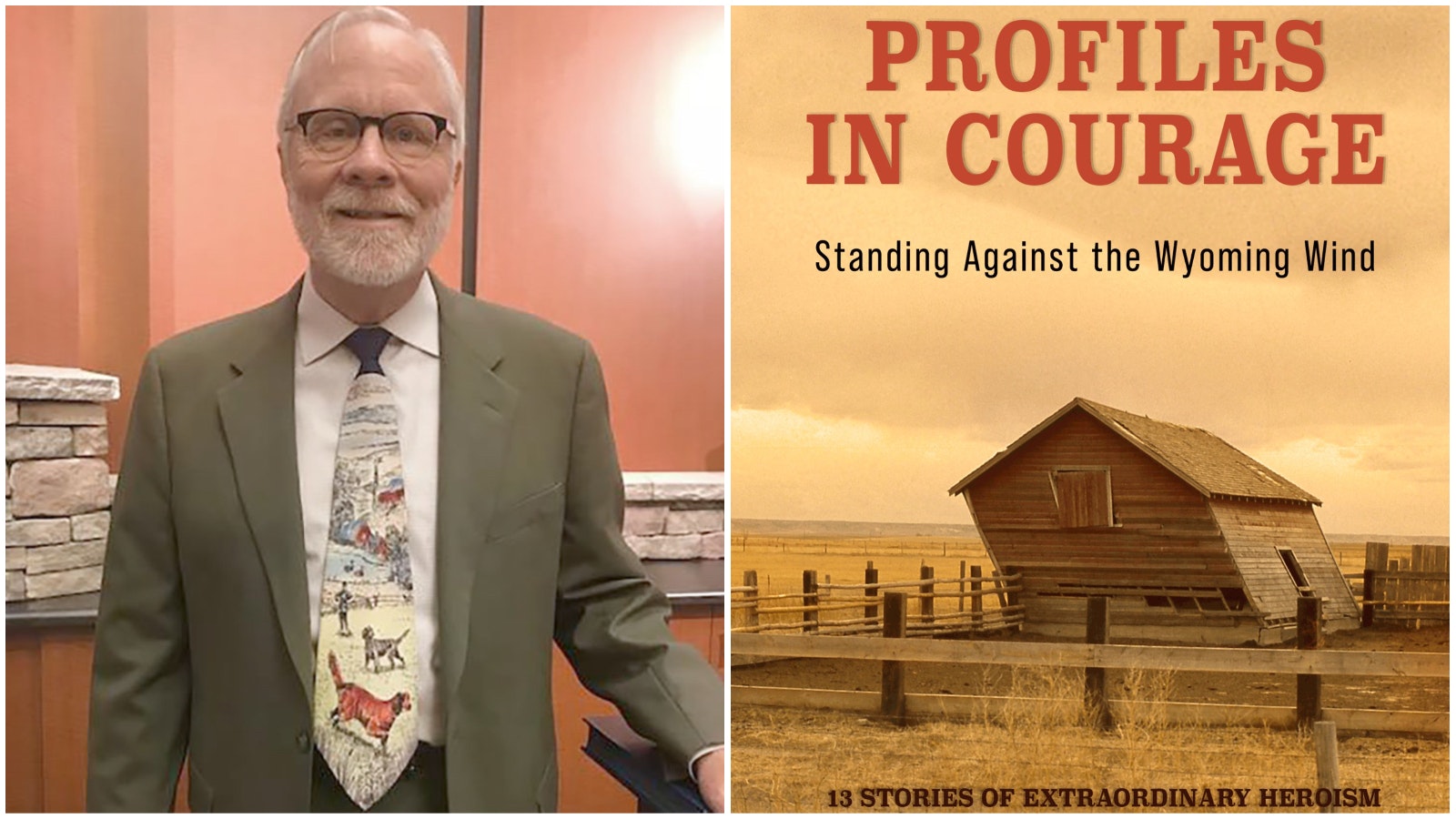Like many Davids fighting their Goliaths, the heroes picked by author Rodger McDaniel in his new book suffered greatly, but caused great change in the Cowboy State.
The book “Profiles In Courage, Standing Against The Wyoming Wind,” recently came out and features some old friends of mine. Rodger sent me a copy, and folks like the late Tom Bell deserve some mention.
It was more than 50 years ago when a rancher named Herman Werner went to war against various endangered species at his Douglas ranch. During hearings before U.S. Sen. Gale McGee’s federal committee in 1971, it was determined that 770 eagles had been shot, along with 222 coyotes, six elk, five bobcats and a bear.
“In addition to the shootings, other birds had been poisoned. Placed in the carcasses of antelope, thallium sulphate caused the deaths of eagles feeding on the dead animals,” Rodger writes. “A witness at the December hearing said he knew of sheep men who would ‘drive across grazing areas tossing the poison out left and right.’ Natrona County Attorney John Burke said carcasses of the seven antelope found on the Diamond Ring ranch were baited with enough thallium sulfates to kill all the animals in the state.”
Tom Bell: Environmentalist
Bell is Wyoming’s most famous environmentalist. Nobody else even comes close.
And back in 1970, he was my customer. I met him when I took over the Lander newspaper, Wyoming State Journal, as publisher. We were printing Tom’s fledgling little newspaper and he was always behind on paying his bills. He was always struggling.
The man who brought me to Wyoming, the legendary publisher Bruce Kennedy, encouraged me to collect Bell’s past-due bills. I was just 24 years old and had not been in Wyoming for more than a week.
Although intimidated, I went to my first meeting with Bell and was astounded to find this incredibly humble, skinny, little one-eyed man.
His desk was a table with hundreds of file folders lined up across the top. No file cabinets, I asked him? He replied that once something was out of sight, he could not focus on it.
His desk was a mess. In some ways he was a mess. Pay his printing bill? How? He was in the process of losing his beloved Tweed Lane ranch and money was tight.
As a young idealist journalist, I fell under his spell. Here was a man who was really saving the world. The old axiom of “think globally, act locally comes to mind when I learned about what he was doing.
Bell led the effort to expose the killing of all those eagles.
Rodger’s book goes into great detail the trials of Bell, and Bell roasted other people, too.
I have always been a big fan of Gov. Stan Hathaway, but Bell spent his adult life ripping the governor. The two men hated each other. When Hathaway was asked what he was going to do the day after his governorship ended, he said he was going to drive over to Lander and punch Tom Bell in the nose.
This book is full of important and telling anecdotes.
His detail on Bell alone is enough to recommend this book.
During my first years in Wyoming, I was really squeezed between my boss demanding I collect that past-due bill and my zeal to support this almost religious effort by Bell to “save” Wyoming.
By the way, the eagle killer Werner was inexplicably killed when his car veered across traffic and collided head-on with a truck north of Rawlins not long after the hearings.
Bell claimed Werner’s kind of reckless disregard for Wyoming’s most basic treasures was happening all across the Cowboy State. Bell felt there was a “good old boys club,” and he almost single-handled took them on.
He founded the strongest environmental newspaper in the region with High Country News, along with the Wyoming Outdoor Council. He also was the impetus for forming the Powder River Basin Resource Council.
Back then, the Tom I knew also had a practical side.
When others wanted the uranium mines in Jeffrey City and Gas Hills reclaimed, he thought it was much more simple to just let water fill them. He also told me one day he favored a road into the Wind River Mountains to Shoshone Lake.
In later years, such ideas were no longer mentioned as a national radical environmental agenda took hold.
He convinced me that clear-cutting timber was a disaster. History has proven him wrong.
12 Chapters Of Wyomingites
The book also profiles another of my heroes, Lynn Dickey of Sheridan. What a great Wyoming citizen.
Despite some amazing physical handicaps, she was a leader in everything she did during her short life serving the people of Wyoming.
Other folks profiled include Sissy Godwin, Jeran Artery, The Black 14 at UW, former U.S. Sen. Joseph O’Mahoney, former U.S. Rep. Teno Roncalio, the Simpson family of Cody, the Wind River Reservation, Heart Mountain, former Gov. Lester Hunt, former U.S. Sen. Gale McGee and former U.S. Rep. Liz Cheney.
This column barely scratches the surface of all the great stories and wonderful detail in this 351-page book. McDaniel struggled during the pandemic years putting this effort together. It is a must-read for people who care about Wyoming and who wonder how we got to where we are today.
My only complaint is that there are almost too many footnotes, which is testimony to how much McDaniel is a stickler to historical accuracy.
Congratulations to him and all the folks who helped him for this outstanding effort.





